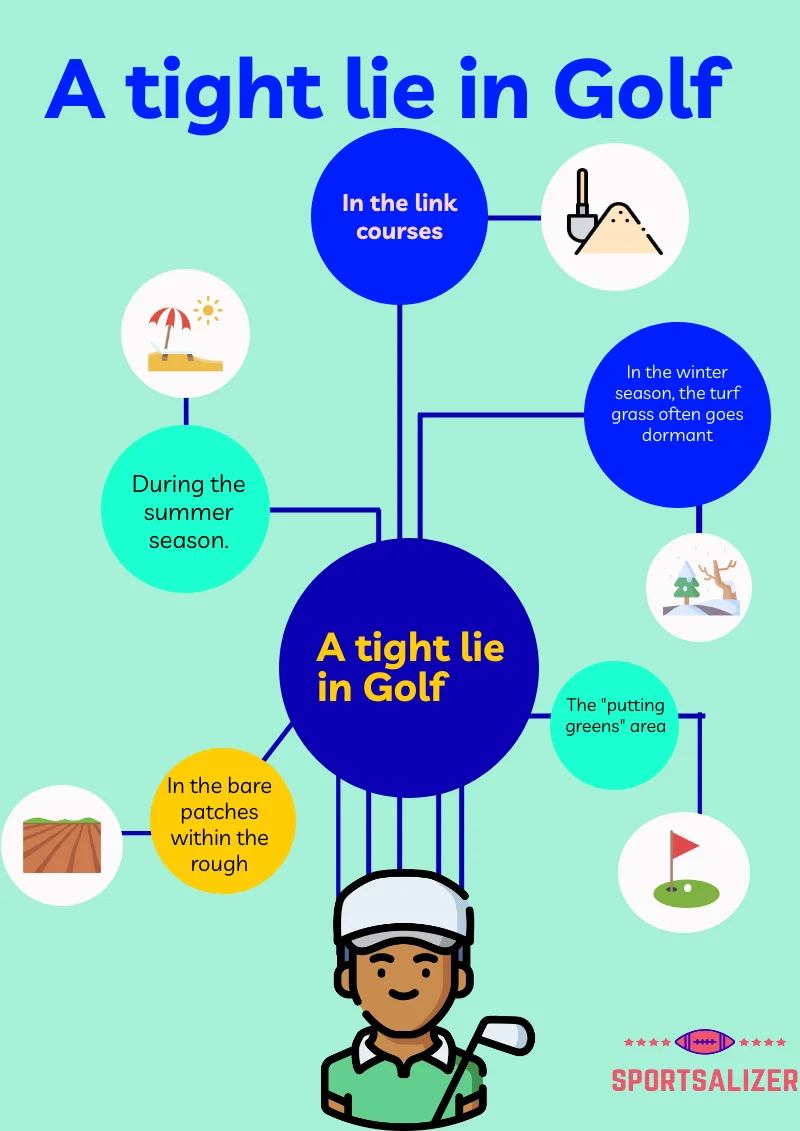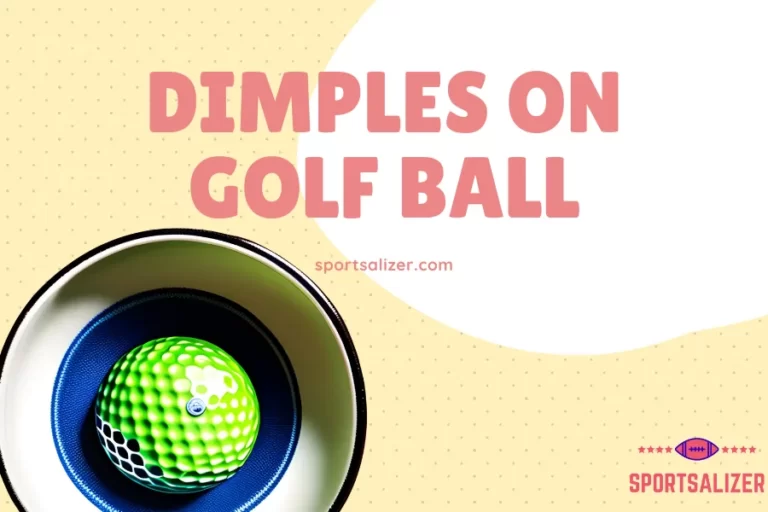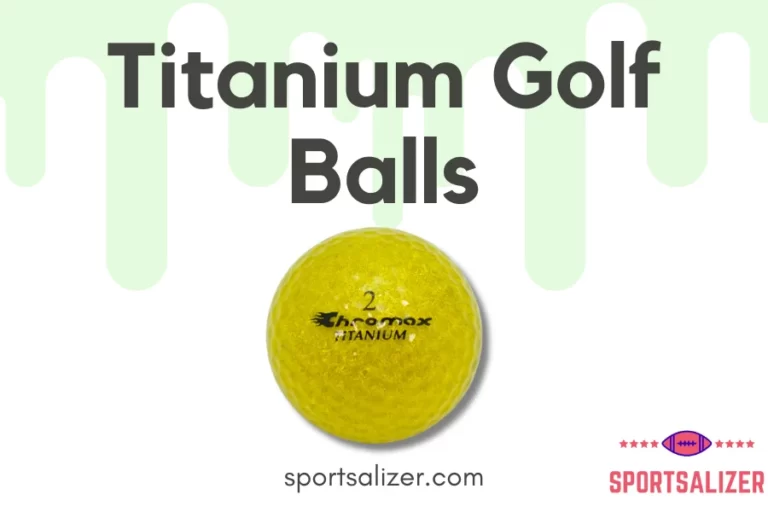A Tight Lie in Golf: Unravel the Compact Mystery Behind It

If you are a golf hobbyist or an amateur, then you might have sometimes heard the term “tight lie in golf” and wondered to yourself about its meaning. If we go by the literal term, then it makes no sense. So what is the actual definition of “tight lie in golf?”
In this sport, the term “tight lie” is used to describe the situation when the ball comes to rest in a spot in the field where there is very little grass underneath the ball. There could be even just dirt or very short turf. The term tight lie in golf is also used to describe that the surface beneath the balls is “rigid” or “compact.”
Contents
In which scenarios can you find tight lie in golf?
There is no specific location in a golf course where anyone can bet to find the tight lie in golf. But of course, there are locations where there is a higher probability of finding tie lie in golf. The situations could be one of the following:
- The first and the most evident case is, of course, during the summer season. We often experience some short showers of rain during this season which causes the golf course to get too dry and crack up and thus, create a tight lie.
- The second situation is not necessarily dependent on any weather conditions. The tight lie in golf is most often found in the bare patches within the rough of the golf course.
- In the winter season, the turf grass often goes dormant due to the weather conditions. This causes to develop tight lie in golf course especially during the cold season.
- We are familiar with the term link courses. These are a specific kind of golf course with a signature style built on sandy soil, often along the coastline. These courses receive practically no watering apart from the rains. Thus, they provide an ideal situation to develop the tight lie in golf courses.
- The last scenario has to be the “putting greens” area. Putting green is located in the golf course where either the flagstick or the hole or both are located. In these areas, the grass is so closely shaved or mowed that they tend to develop a situation where only dirt is present, which is commonly referred to as a tight lie in golf.

Getting a tight lie in golf a problem for some?
The tight lie in golf is not a very problematic issue for all golfers, but there is a specific category that finds this quite intimidating. The higher handicap golfers are the ones who face quite some problems with the tight lie in golf. The reason behind this is straightforward. It is often more accessible for the higher-handicappers to be confident about those shots when the golf ball sits comfortably on a good cushion of grass. This is because getting the ball to float in the air is way more difficult for the higher-handicappers golfers.
Playing with a tight lie and positioning the golf club right under the ball often leads to a type of hit known as a thin shot. If you are not familiar with the term “thin shot,” let us give you a brief insight. In simple words, a thin shot occurs when the head of the golf club strikes the golf ball too high, which ultimately results in a low or sometimes in a slicing shot. A disadvantage of a thin shot is that it produces much more vibration in the golfers’ hands.
Ways to adjust to the tight lie in golf
So if a tight lie in golf makes you uncomfortable and you cannot perform well, here is a quick tip that you can use to excel in your game.
When you encounter a situation where your ball lands on bare dirt or a tight lie situation, the first thing that you should always do is to play the ball back, a little bit in your posture. It should be clubbed by putting more weight on the front foot and then focusing on swinging the golf club a bit more steeply but keeping into contact with the downswing. The most important thing that you need to keep in mind in this process is keeping a “smooth tempo.”
These adjustments will help a player hit the ball more efficiently before hitting the turf with the golf club. But one thing you should note here is that all these adjustments you make will result in the ball rolling more and coming out a “little lower than normal.”
Are “tight lie in golf” is same as “Tight Lies?”

You would be stunned to learn that the two terms “tight lie in golf” and “Tight Lies” are entirely different in meaning. But isn’t the second term just the plural of the first one with capitalized initials? It does look like that, and surprisingly enough, that is even the differentiating factor between the two.
The phrase tight lie in golf has already been explained elaborately in this article. So let us now explain the second term, “Tight Lies.” We all have heard of the famous sports equipment company “Adams Golf.” In 1996 they launched one of their golf clubs with the name “Tight Lies.”
The Tight Lies fairway woods that were launched were designed to increase performance from a variety of lies, not only tight lies, and had low centers of gravity to assist in getting the ball up in the air. The original Adams Tight Lies had a significant influence on the golf business, culminating in emphasizing long-iron replacement clubs like hybrids. Tight Lies became a trademark for Adams, who used it on various golf clubs. Adams Golf, which began in 1988 and was overtaken by TaylorMade in 2012, is no longer a part of the golf landscape.
FAQs on Tight Lie in Golf
What is the optimum bounce for tight lies?
A low bounce of ten or less is ideal. If you keep your ball on the short grass, it’s perfect for shots from tight lies and hard turf conditions. Because the leading edge is much smaller with less bounce, skilled golfers can be more inventive with plays like flop shots near the green.
How do you hit off a hard lie?
Here are four strategies for hitting a hard lie in the cleanest manner.
Return the golf ball to your stance. As a result, your hands will be in front of the ball.
Swing the ball down harder. The golf ball will spin backward as a result of this.
Maintain a solid tempo.
More loft is required. Instead of using a longer iron, try a hybrid.









